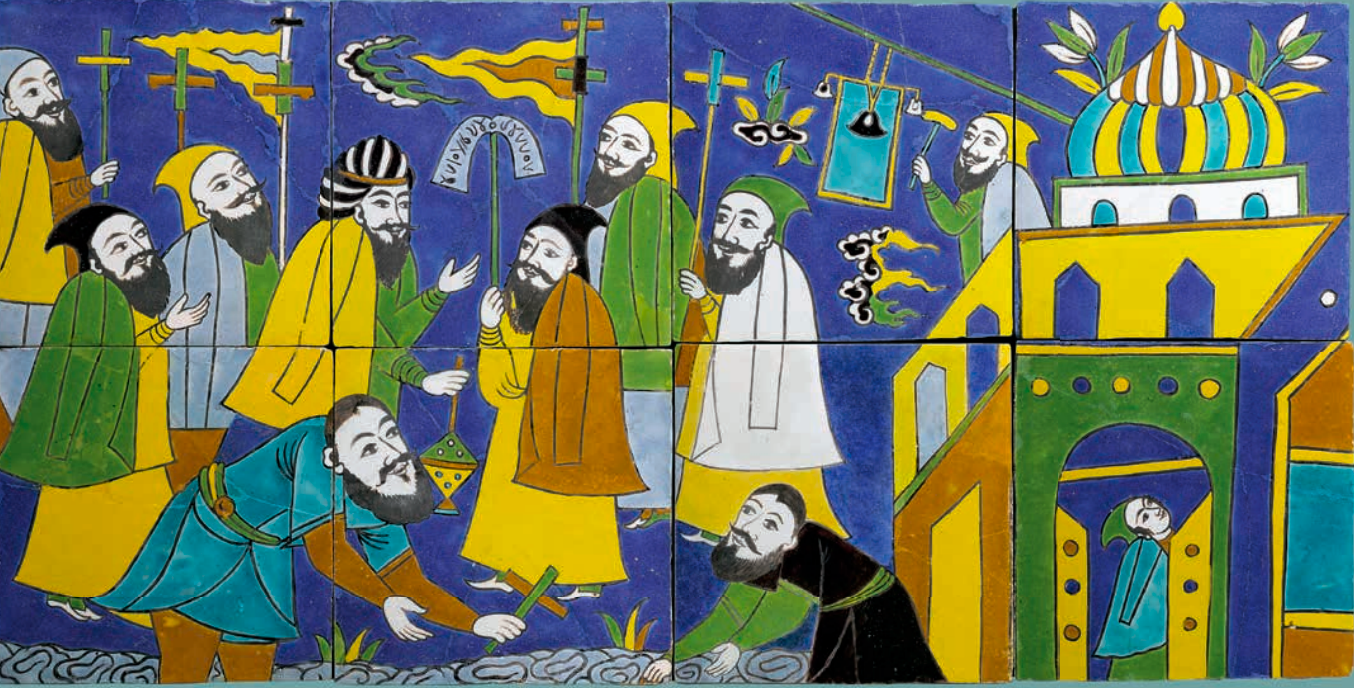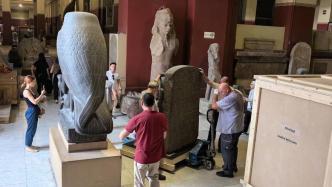
In three weeks, 788 ancient Egyptian artifacts were moved from Egypt to Shanghai... The tallest piece, a stone sculpture of Merneptah, was 2.4 meters tall and weighed 2 tons...
The huge exhibition hall of the Egyptian National Museum is like a "big construction site". Crates with Shanghai Museum seals are everywhere in the exhibition hall. The bust of Pharaoh Akhenaten is being packed. A Chinese netizen traveling in Egypt lamented that "for the big exhibition in Shanghai, the huge Egyptian National Museum seems to be emptied."
In May this year, the Shanghai Museum and the Supreme Antiquities Committee of the Egyptian Ministry of Tourism and Antiquities jointly announced that they would jointly hold the "Top of the Pyramids: Ancient Egyptian Civilization Exhibition" in Shanghai in July this year. Since the official announcement, the exhibition has received extremely high attention. The Paper learned that a chartered cargo plane loaded with ancient Egyptian artifacts took off from Cairo and arrived in Shanghai in the early morning of June 16. The Shanghai Museum's "Top of the Pyramids-Ancient Egyptian Civilization Exhibition" will enter the exhibition stage. "The Paper|Ancient Art" recently interviewed members of the working group who went to Egypt to participate in the handover of cultural relics, asking them to share the stories behind the handover of Egyptian cultural relics.

The cultural relics of "Top of the Pyramids: Ancient Egyptian Civilization Exhibition" arrived in Shanghai by charter flight in the early morning of June 16
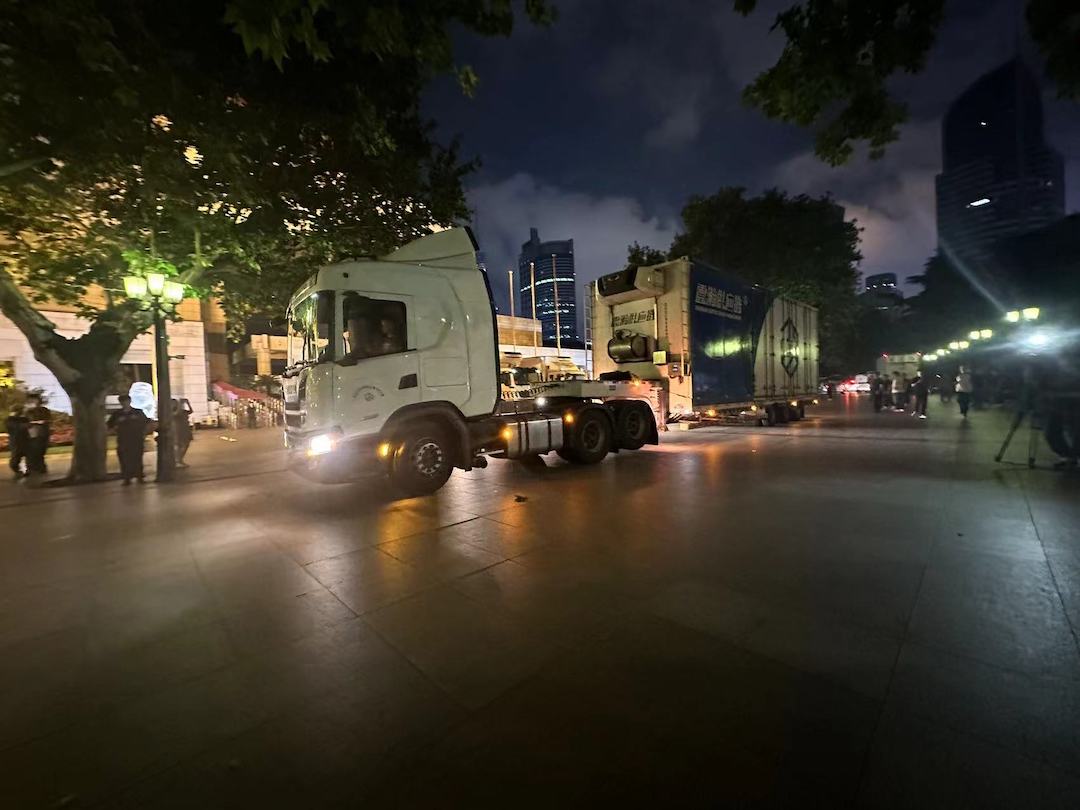
The cultural relics of "Top of the Pyramids: Ancient Egyptian Civilization Exhibition" arrived at the Shanghai Museum on the evening of June 16
"In the early morning of this day, the Shanghai Museum advance team set out to Egypt! The journey of 21 days and 788 cultural relics was started!" In the early morning of May 18, Chu Xiaobo, director of the Shanghai Museum, posted a group photo of the six-member team of the Shanghai Museum before leaving for Egypt at the airport and captioned it. For a period of time thereafter, the scene of the Shanghai Museum staff counting and handing over cultural relics in Egypt was constantly "encountered", "watched" and "photographed" by Chinese tourists traveling in Egypt and uploaded to the social media "Little Red Book".
"While walking around the Egyptian Museum, I saw a pile of boxes being packed. I saw the Shanghai Museum label!" A "Little Red Potato" posted excitedly, with 7 photos of the scene, followed by a long list of comments, "The Egyptian pharaoh is going on a business trip", "It feels like one museum robbed another museum", "I came all the way to Egypt to see it, but it was moved away", "The exhibition hall is being packed, this is very Egyptian"...
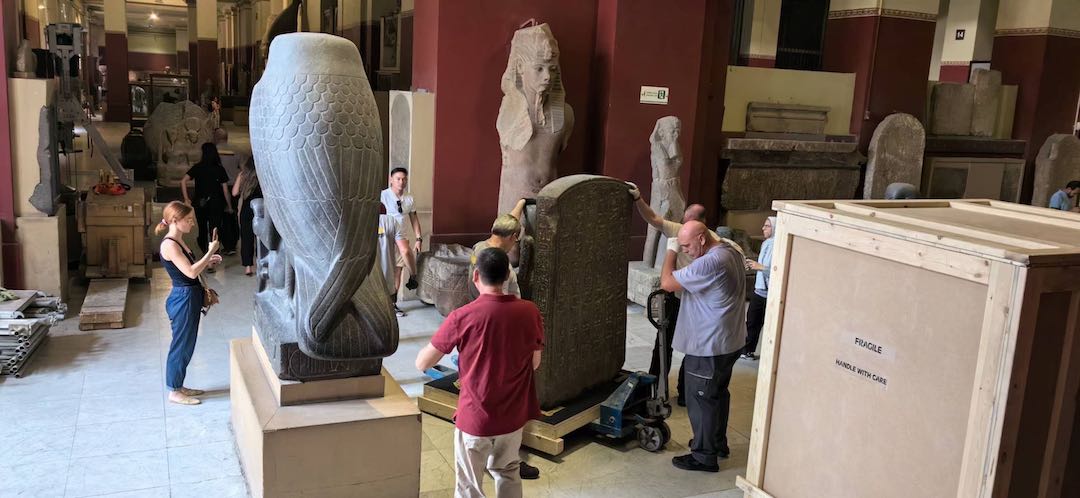
The site of the inspection and shipment of cultural relics at the Egyptian National Museum
3 weeks, 788 cultural relics, a tough battle
From the handover, packaging, to transportation of cultural relics... Chinese netizens traveling in Egypt spontaneously "live broadcast" with pictures and texts in real time, and the Shanghai Museum's "Ancient Egyptian Civilization Exhibition" has become popular before the exhibition. "I didn't expect that the scene of our cultural relics handover at the National Museum of Egypt would be watched by people and even posted on Xiaohongshu..." Zhao Cenrong, deputy director of the Shanghai Museum's Conservation Department, who had just returned to Shanghai one step ahead of the cultural relics, smiled and told the reporter of The Paper. As the "head" of the six-person team of the Shanghai Museum to Egypt, Zhao Cenrong and her colleagues can be said to have just fought a "tough battle".

The Shanghai Museum sent a 6-member team to the Egyptian National Museum to check and hand over cultural relics
"We have a heavy task this time. We only have three weeks to complete the inspection and delivery of 788 cultural relics at the Egyptian National Museum and the Saqqara Antiquities Warehouse south of Cairo. The difficulties and challenges we face are unprecedented."
"This exhibition is the first time that a Chinese official museum has cooperated with the Egyptian government. It is also the first time for us to go to Africa to participate in the handover of cultural relics after working at the Shanghai Museum for many years, and the first time to directly come into contact with ancient Egyptian cultural relics." Zhao Cenrong introduced that in the past, the Shanghai Museum's international exchanges and cooperation were mostly with some large museums in Europe and the United States.

Chinese and Egyptian staff conduct the handover of cultural relics
As an old Shanghai Museum staff member who has been dealing with cultural relics for more than ten years, Zhao Cenrong has rich experience. He is not only familiar with the cultural relics in the Shanghai Museum's collection, but also familiar with the types, materials, functions and procedures of cultural relics. However, this Egyptian cultural relics inspection is a bit beyond their previous experience. "Most of the cultural relics in the Shanghai Museum's collection are handed down from generation to generation, with good quality and exquisite appearance. Egyptian cultural relics belong to a completely different style system, such as pharaoh stone carvings, painted wooden coffins, animal mummies, and the latest unearthed archaeological relics. We don't know much about their materials and preservation conditions."
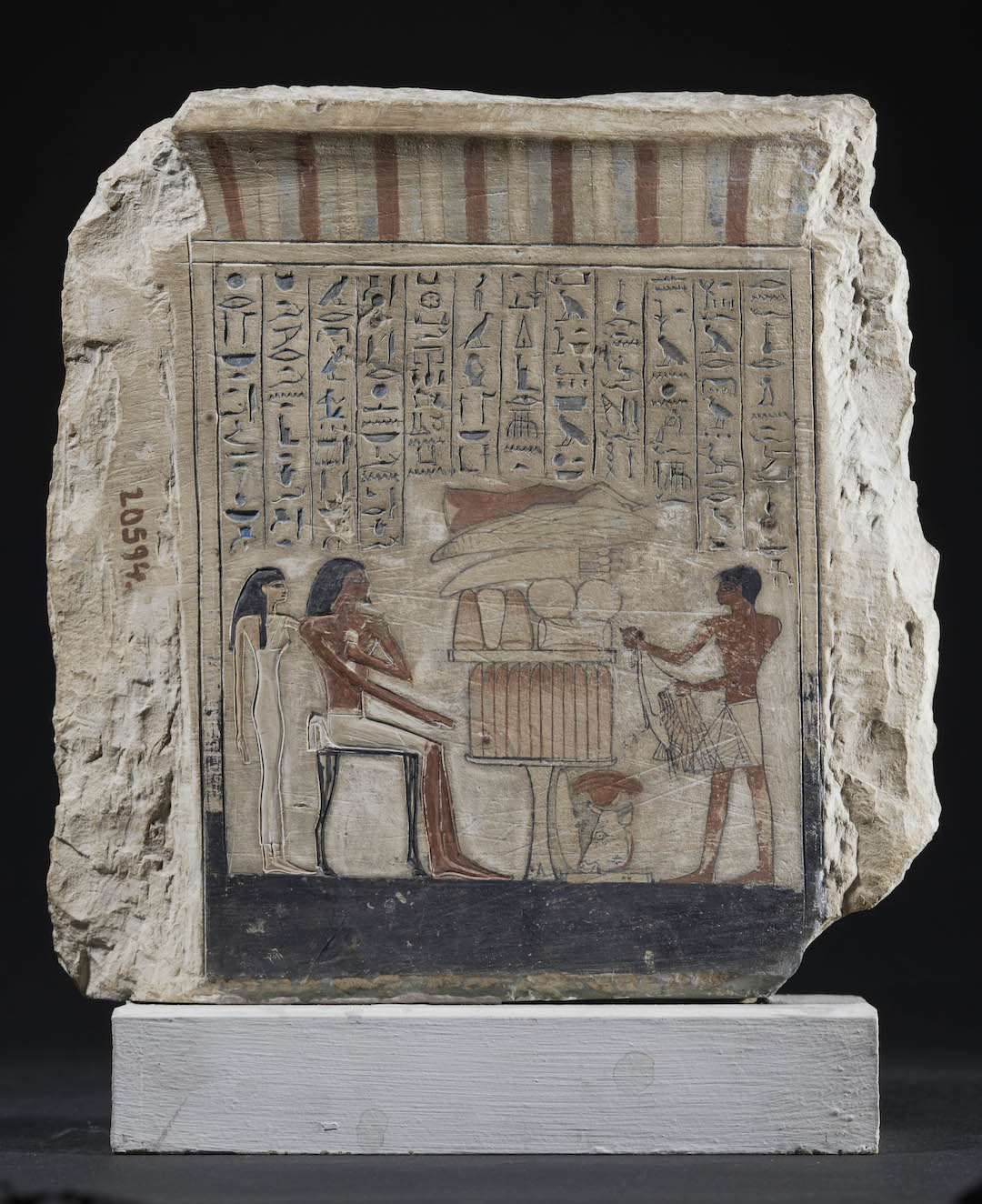
Painted limestone stele
Moreover, the number of cultural relics on display is huge and varied, including large stone sculptures, painted wooden coffins, gold ornaments, limestone flakes, animal mummies, painted pottery, bronze statues, various wood carvings, and a large number of newly unearthed cultural relics from archaeological sites. The size of the cultural relics also varies greatly, ranging from large stone sculptures and stone tablets weighing up to 3 tons to small scarab ornaments and rings of only a few centimeters.
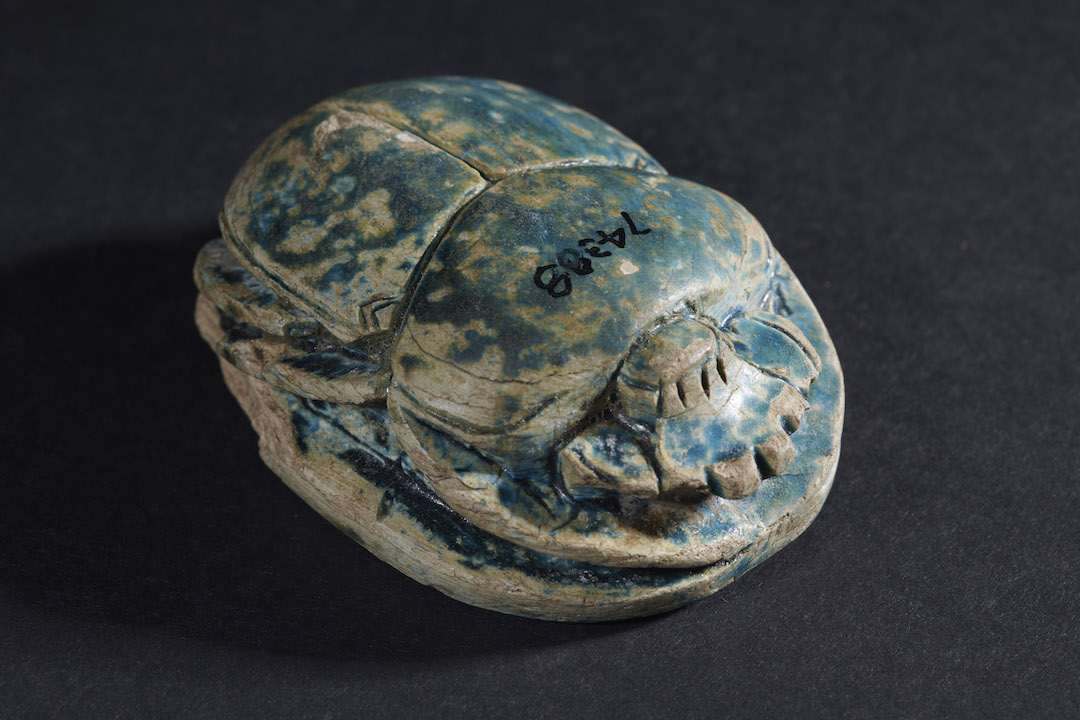
Scarab of Amenhotep III
On the second day after arriving in Egypt, the members of the Shanghai Museum's cultural relics inspection and handover team immediately started working, starting from 9 am to 6 pm, with only half an hour for lunch at noon. The continuous high-intensity work rhythm is a great test for the physical strength and concentration of the team members. What made them feel most "uncomfortable" was the hot climate in Egypt. "A high temperature of 40 degrees Celsius is the norm, and there is no air conditioning in the museum, which is completely in a natural state."
The last week's cultural relics inspection and handover work was carried out in a cultural relics warehouse near the Saqqara archaeological site. Zhao Cenrong glanced at the thermometer and hygrometer he brought with him and saw that the maximum temperature had soared to 50 degrees Celsius.
In addition to challenges such as climate, diet, and work pressure, there are also challenges in the working styles of the staff of both sides. In Zhao Cenrong's opinion, the staff of the Egyptian National Museum are relatively friendly and the communication between the two sides is relatively smooth. However, in the specific process of handing over cultural relics, there are still some subtle differences in the focus of the two sides on the "Cultural Relics Status Report".
The number of cultural relics that need to be checked in this time is also unprecedented. 492 groups of 788 cultural relics, what does this mean? The relocation of cultural relics from the Shanghai Museum's East Pavilion was a major project. Using the newly opened sculpture pavilion in the Shanghai Museum's East Pavilion as an analogy, the space of this exhibition is equivalent to the size of three sculpture pavilions, and the three exhibition sections are equivalent to three independent exhibitions held in the past.
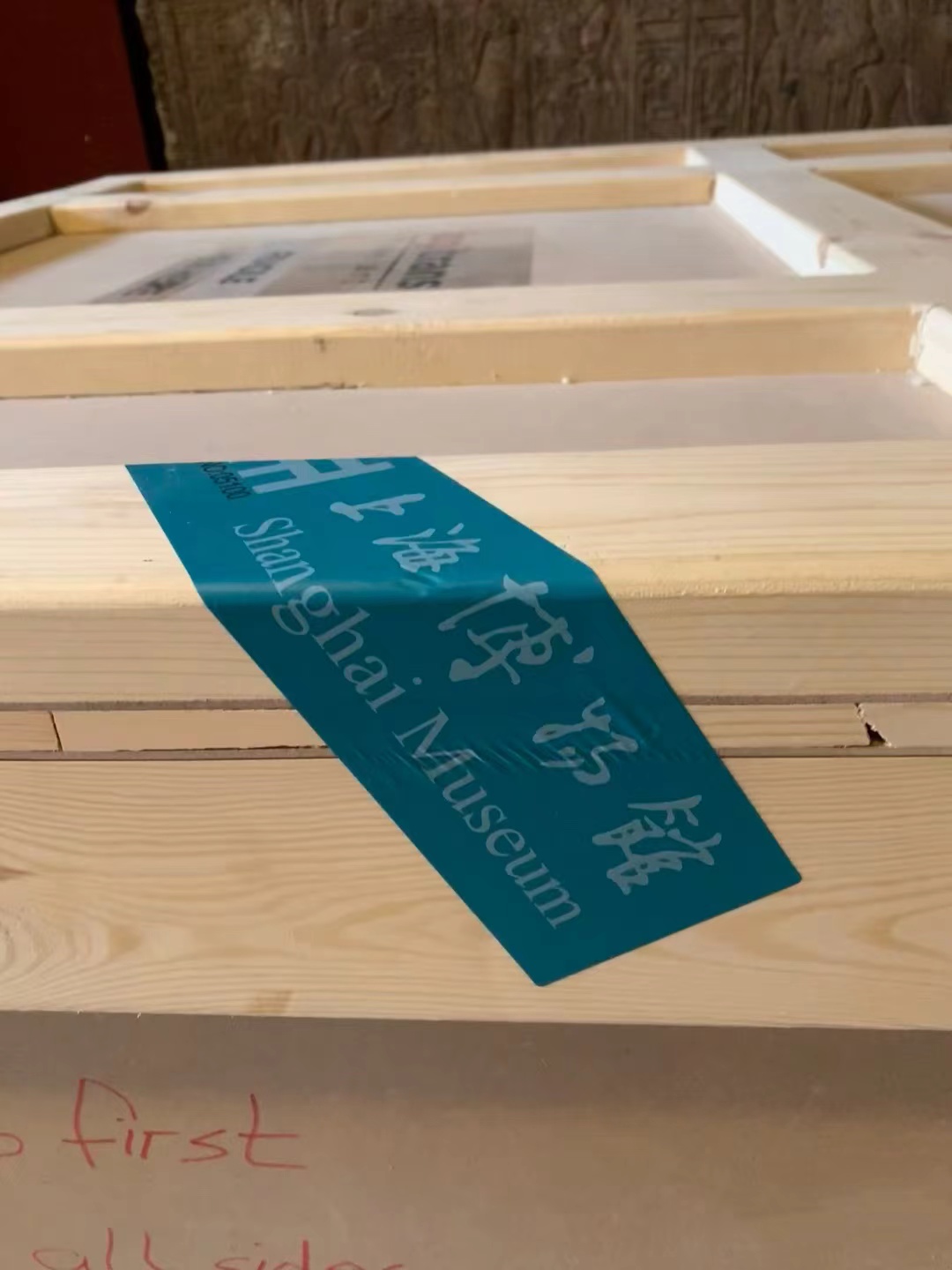
Crate with the seal of the Shanghai Museum
All the cultural relics have been packed. A total of 91 crates were used, including 90 boxes of cultural relics. The cultural relics inspection report also filled an entire box.
Pharaoh statues and giant stone tablets flew nearly 10,000 kilometers to Shanghai
"We divided the cultural relics into three groups, large, medium and small, and counted them separately according to the packing requirements. The medium and large items were handled directly in the exhibition hall, while the small items were handled in the restoration room next to the exhibition hall." "It is difficult to move those large cultural relics such as stone carvings and stone tablets weighing several tons. The small cultural relics are placed naked without inner packaging. We cut and package them on site according to the shape."
"For all cultural relics, no matter how big or small, we first check their contents and whether they are on the exhibition list. More importantly, we carefully check the condition of each cultural relic," Zhao Cenrong said. "Each cultural relic has its unique value. We will avoid any possible damage and ensure that these cultural relics can be exhibited intact and returned to Egypt in good condition."
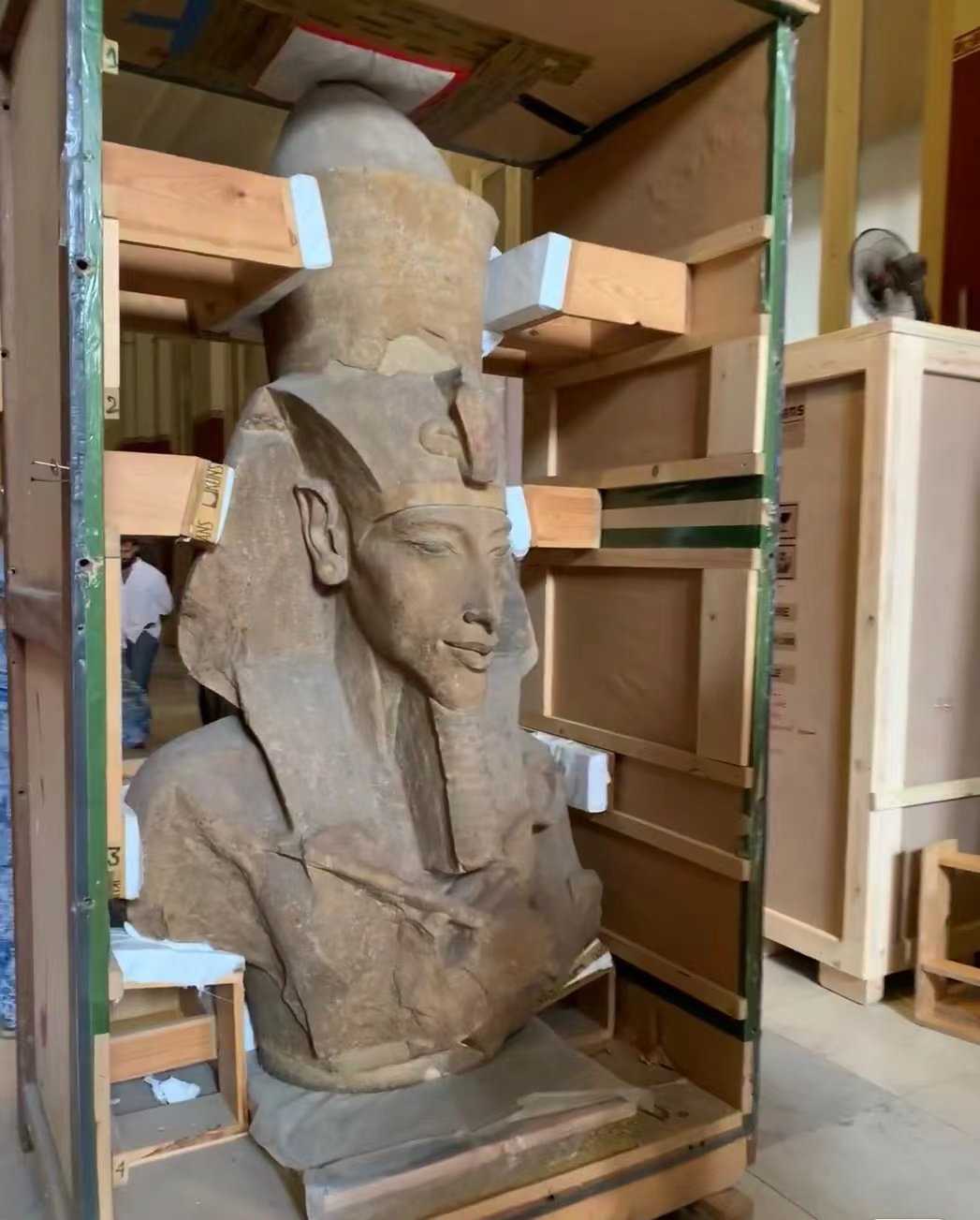
The scene of the collection and shipment of cultural relics at the Egyptian National Museum (Photo from social media)
The cultural relics on display include statues and giant stone tablets of pharaohs and queens such as Akhenaten, Tutankhamun, Amenemhat III and Ramses II. These are rare and important cultural relics in Egypt-themed exhibitions held outside Egypt.
The stone sculptures are of astonishing size, with ten statues and stone tablets weighing more than 1 ton, the heaviest weighing 3 tons, and the tallest 2.4 meters high. As there is no way to move them manually, the medium and large pieces of cultural relics are disassembled, checked and shipped directly in the exhibition hall.

The handover of cultural relics is underway at the Egyptian National Museum
"According to our past work practices at the Shanghai Museum, the transportation, inspection and display of all cultural relics were completed 'behind the scenes', while the exhibition halls of the Egyptian Museum are open, one room after another. They cordoned off an area of the exhibition hall as our work area, and there were tourists coming and going in the exhibition hall as normal." Zhao Cenrong said, "Chinese tourists who come to visit the Egyptian Museum are very excited to see the seal of the Shanghai Museum. People keep coming to ask about our work, and there are also foreign visitors asking where these cultural relics will go." After the cultural relics were moved away, the empty display cabinets were placed with exhibition signs that read "Cultural relics going to China for exhibition."
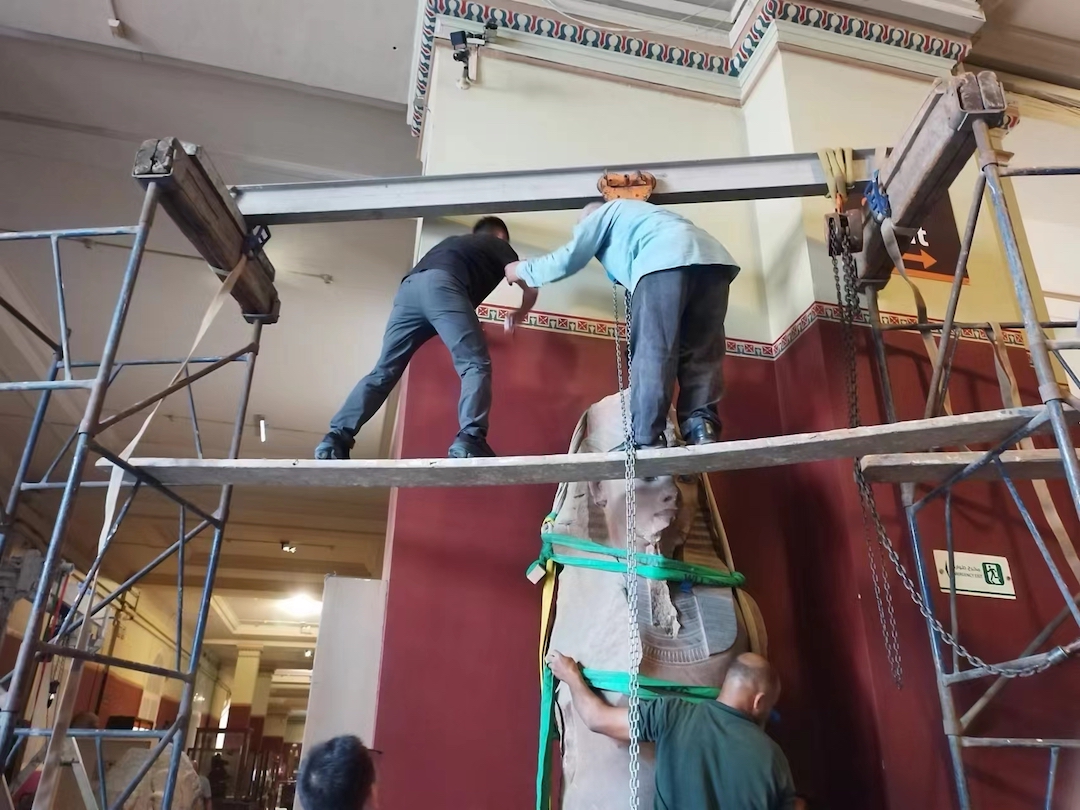
Workers hand over a quartzite statue of Tutankhamun
"It is a technical job to dismantle, pack and transport the huge objects weighing several tons in the exhibition hall to Shanghai on the other side of the ocean. Some sculptures take a whole day to dismantle." Zhao Cenrong introduced that, for example, when dismantling the quartzite statue of Tutankhamun, the staff first tied ropes to the statue and hung it with the iron chain of the hoisting machine, and then dismantled the statue's fixing device to prevent the statue from being unstable and falling. After dismantling the fixing device of the stone sculpture, the hoisting machine was used to slowly lift the pharaoh statue from top to bottom. Some sculptures are relatively high and are not convenient to move and transport, so they need to be transported horizontally.
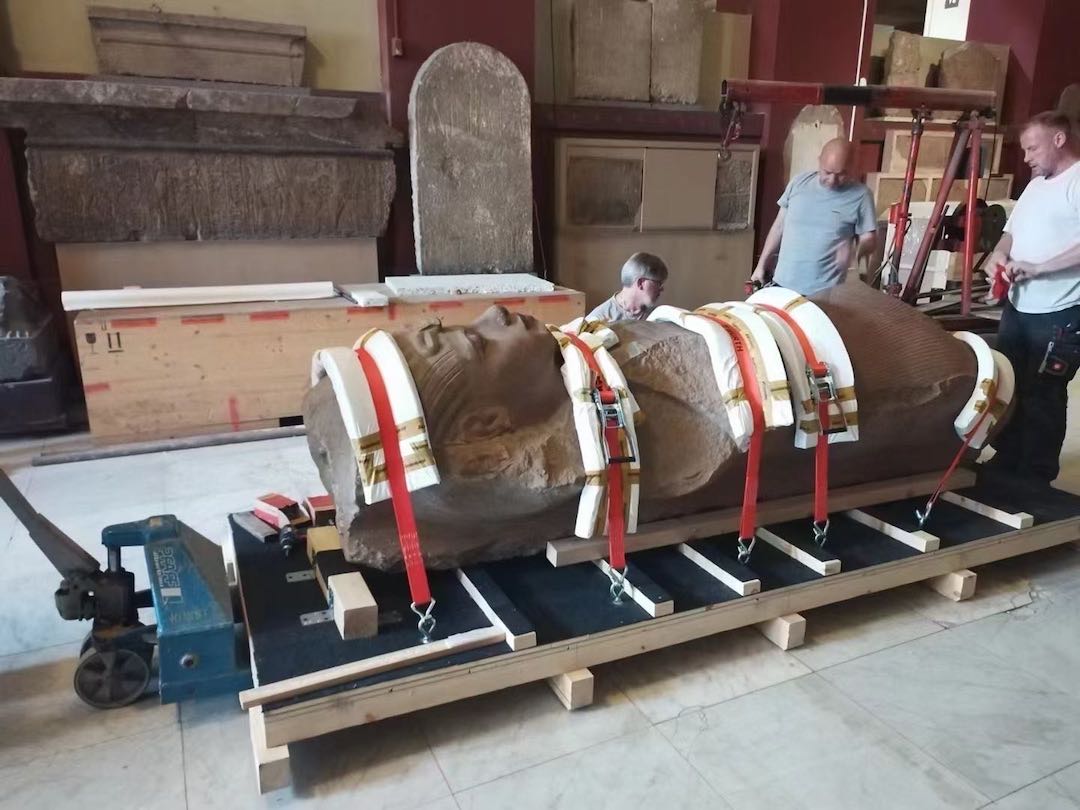
Workers are moving the quartzite statue of Tutankhamun
It was revealed that the tallest stone sculpture among the cultural relics on display was the Standing Statue of Mernepta from the Luxor Museum. It is 2.4 meters high and weighs 2 tons. It is planned to be displayed in the People's Square outside the Shanghai Museum.
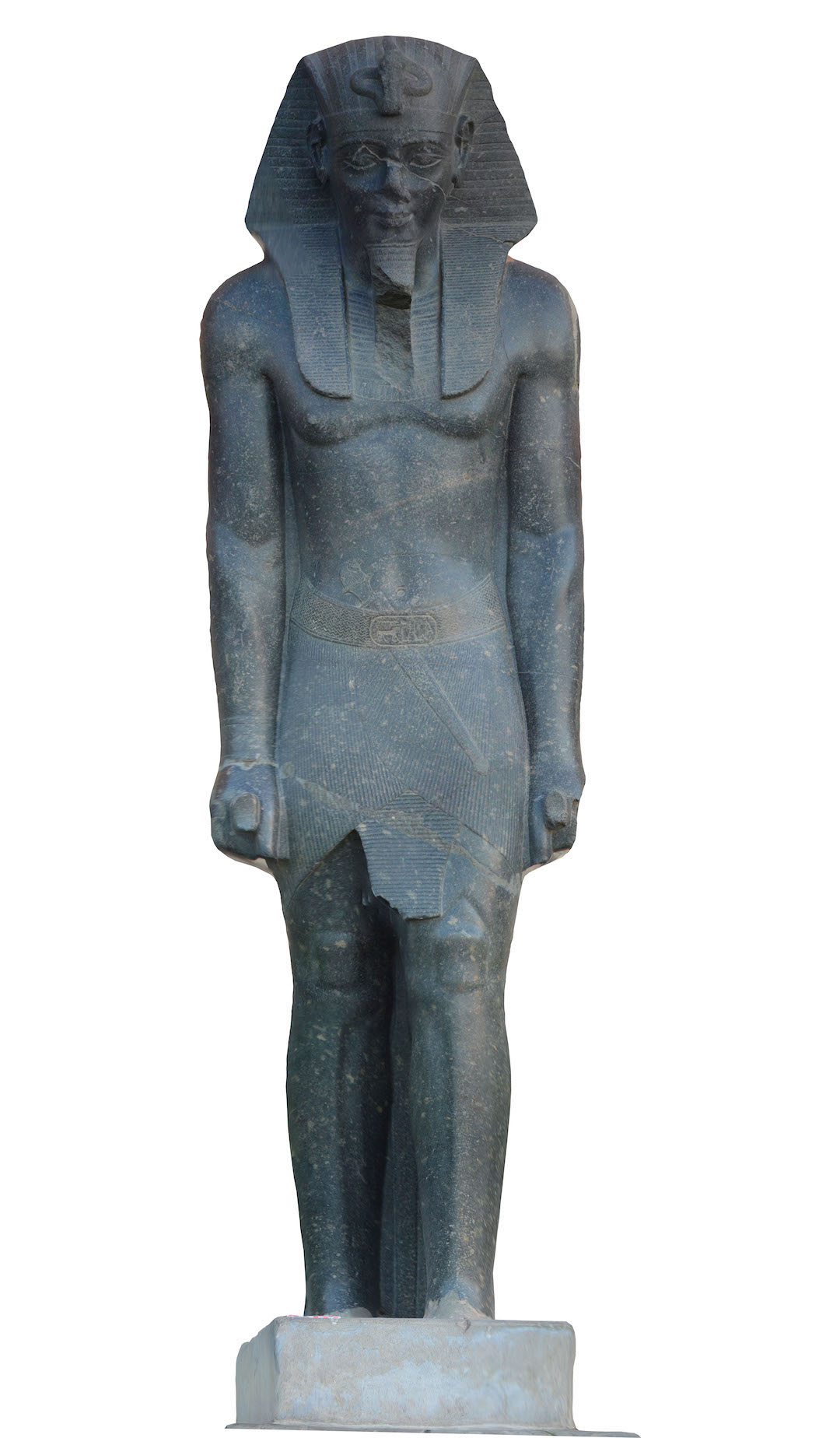
Merneptah statue in Luxor Museum, Egypt
Considering the difficulty and feasibility of transporting stone sculptures and long-distance migration, there are few exhibitions on ancient Egyptian civilization that bring together so many large sculptures at one time like the Shanghai Museum. The arrival of these sculptures with unique ancient Egyptian symbols will become one of the most important highlights of this exhibition.
"The 'Pharaoh' is here! The 'Queen' is here! The 'Gods' of Ancient Egypt are here! The lovely cat god is here too. The 'China-Egypt Partnership Year' opens a new chapter of exchanges and mutual learning among civilizations." After the ancient Egyptian cultural relics arrived in Shanghai safely, the museum director Chu Xiaobo was so excited that he could not express it in words.
